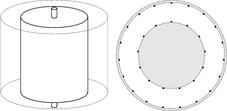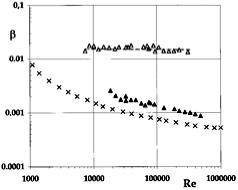Injection of energy in turbulent flows


I have studied the injection of energy in closed turbulent flows with Yves Couder and Olivier Cadot for only about six month, but the result was so striking that I still remember it :-).
The starting point is the observation that many closed turbulent flows do not dissipate energy as efficiently as they are expected to, according to the standard theory for homogeneous isotropic turbulence. It turns out that these flows are not homogeneous enough for the theory to apply: energy is injected into the flow via boundary layers, inside which part of the energy is dissipated. The thickness of these boundary layers decreases with increasing wall velocity. Far from the boundaries, dissipation does follow the predicted scaling (as do certain statistical properties of the turbulence), which means that surprisingly the efficiency of the stirrer to set the fluid into motion does not decrease with increasing velocity. The contribution of the boundary layers to the dissipation however diminishes with respect to the dissipation in the bulk, so that the total dissipation does not follow a simple scaling.
inertial forcing vs. via boundary layer forcing If the energy injection scale is forced to remain in the inertial range – by attaching ribs to the walls that are larger than the boundary layer thickness – the scaling of energy dissipation according to Kolmogorov’s theory is recovered. See the publication for details.
Last modified: 18 Jul 2020